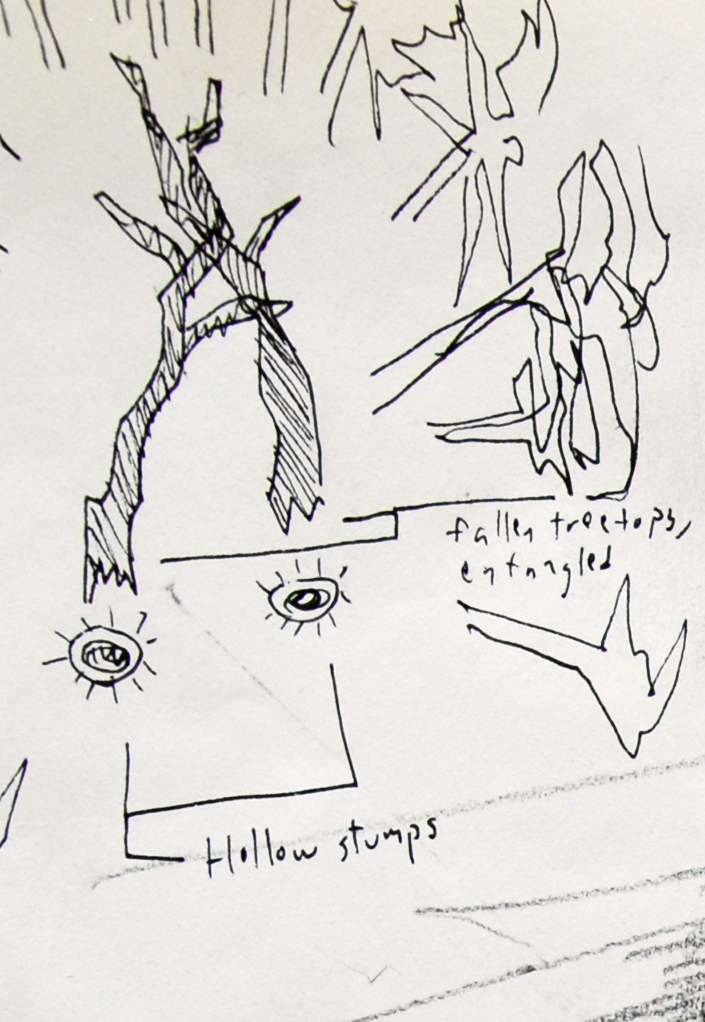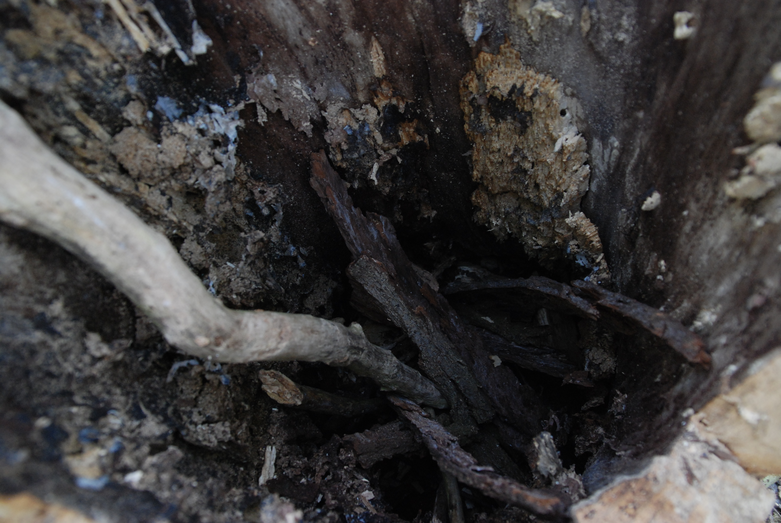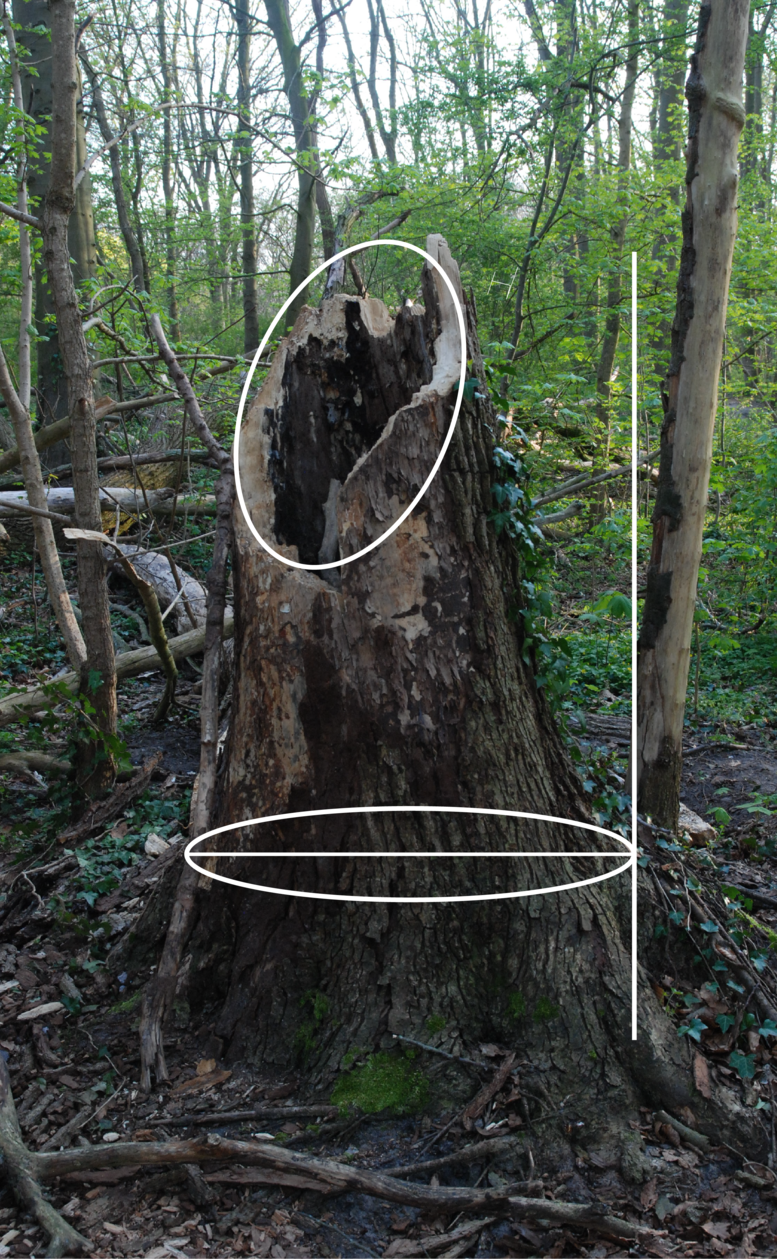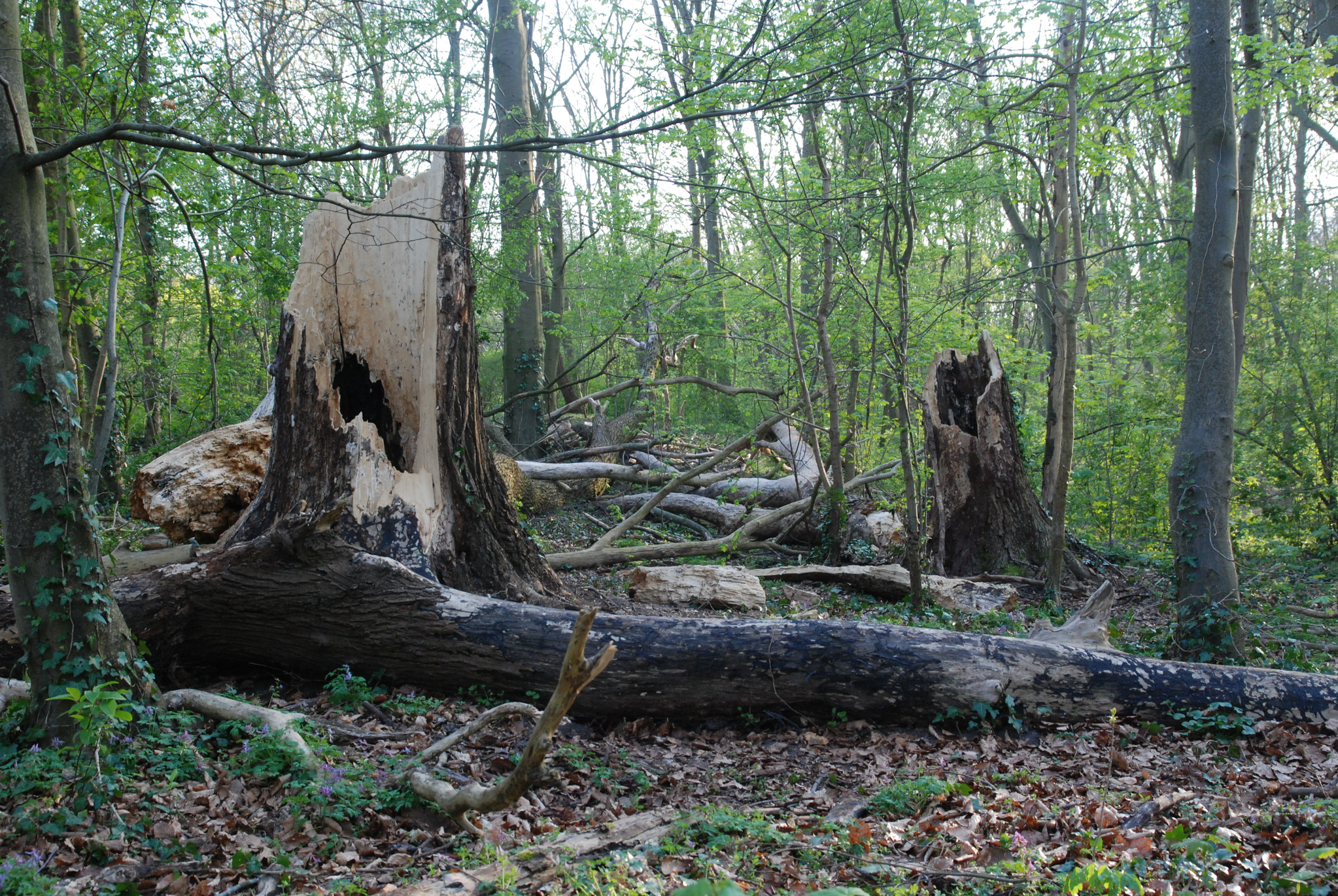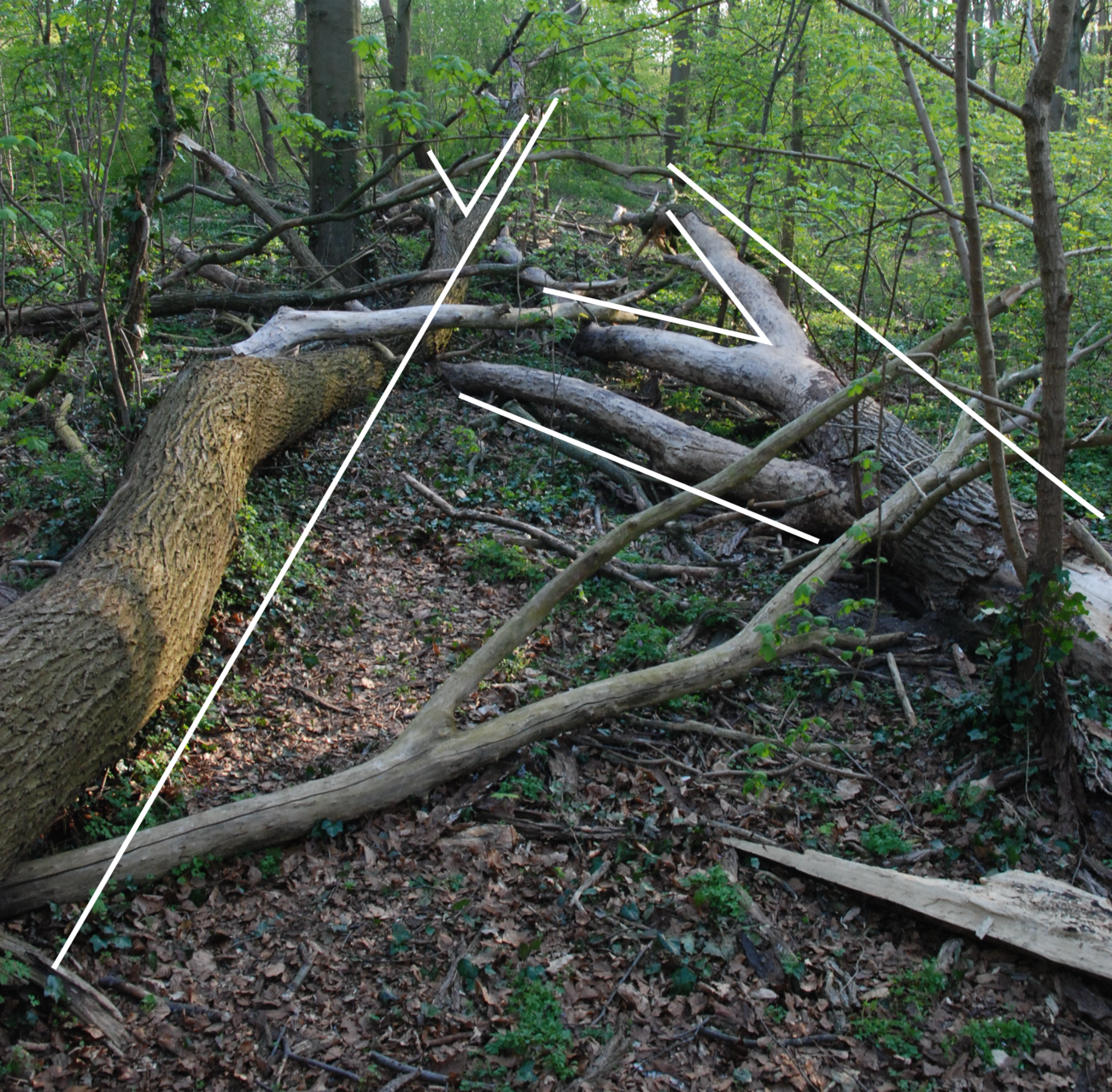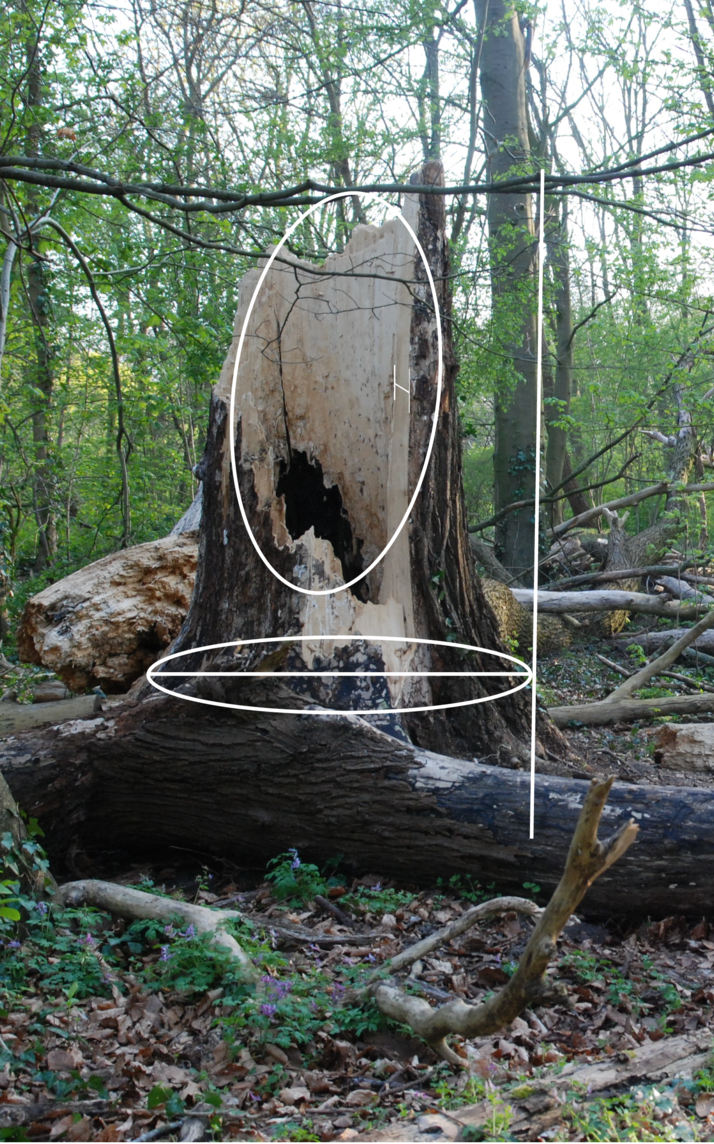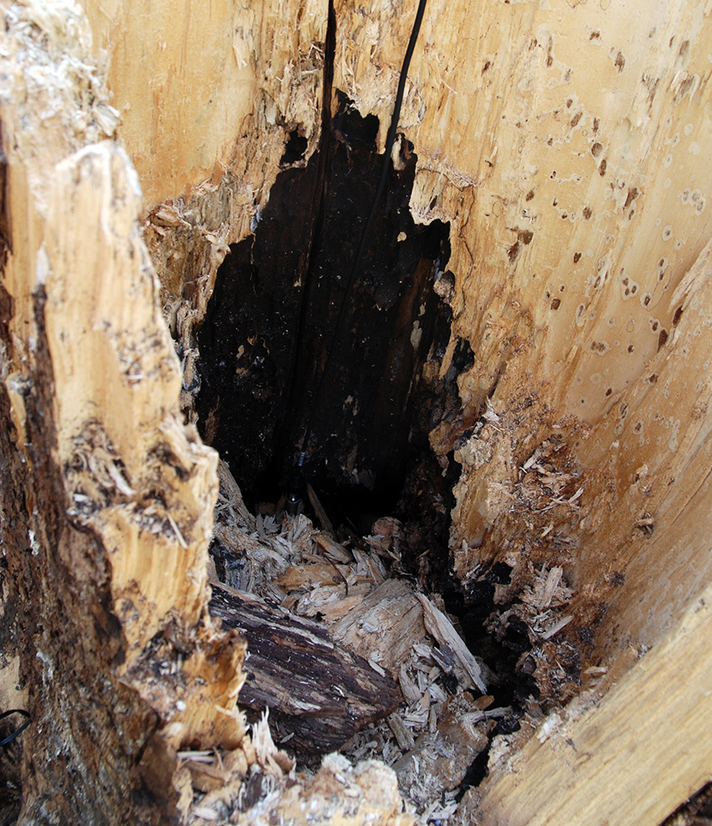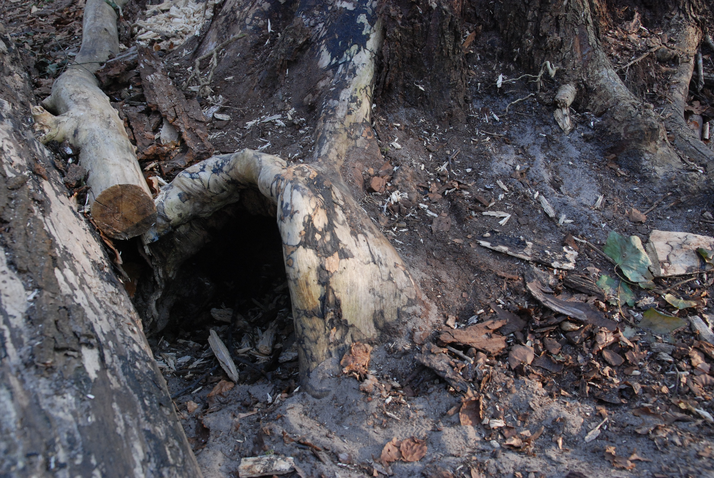Characteristic to both stumps is the jagged edges of their breaking points. The collapse of the trees likely tore off some of the surrounding bark, exposing the bright yellow wood underneath. Ants and beetles crawl around in the wood. On two occasions I encountered a bumblebee, flying around in Tree stump A. I have also seen mice in the area. Perhaps they find shelter in the tunnels of the trees’ roots.
A striking aspect of the dead trees is how similar they are. The rot appears to be at the same stage in both, they are of the same size and species, their tops fell in the same direction. Their wounds have the same jagged edges, and both their hollows appear bottomless. One is an incident, two is a pattern. They told a story.
What was it that I found so appealing in these trees? There are plenty of fallen trees in the forest. In hindsight I can name a few reasons for how those trees could inspire me as much as they did. Woodworking is central in my practice. I have spent a lot of time sifting through the undergrowth of forests looking for logs to carve.
1Note that the document I am referring to is from a volume of the American Journal of Botany published in 1922. I am sure botanical research into the nature of wood rotting fungi has progressed in the last 98 years. However, I have no intention of contributing to the field of botany, so it matters little if my source is grossly outdated. In any case I prefer to cite documents from a time when wood rotting fungi was still referred to with the immensely poetic term “heart rot”.
On their own, the two tree stumps are evocatively sculptural. The sound they produce when knocked on also stirred in me my interest in making instruments. I had been playing with the idea of attaching violin strings to trees for a long time and now the urge returned. Chiefly I believe the trees called to me due to both being in such a late stage of rot decay. In the autumn of 2019, I was researching the effect of rot in trees. I used this research in the narrative of a video wherein rotting forests are part of a story of interconnected and vulnerable systems. In the two dead trees I could for the first time see the final stage of rot decay with my own eyes. The tree stumps are huge, and their insides have been completely hollowed out. Rot deteriorates the tree trunk, and the decayed mass crumbles away over time (Kauffman, Kerber, 1922, 496).1 I found myself looking at the result of a process that could have lasted years, affecting entities at least twice my age.
b1: Tree stump B (right) has a ground circumference of 246 cm, with a diameter of 78,3 cm.
b2: From ground until breaking point it stands 188cm tall.
b3: The thickness of the wood from the outer layer to the hole left by the rot is also 8cm.
b4: The breaking point begins at 150cm and ends at 188cm, giving it a slightly smaller, more circular opening than Tree A. The hole is filled with long branches (figure 6).
a5: The fallen part of Tree A is approximately 15 meters long.
a6: At two thirds of its length the trunk divides into two similarly large branches.
b5: The fallen part of the tree is approximately 13 meters long.
b6: At one third of its length a thick branch points out of the trunk in the direction of Tree A.
b7: At two thirds of its length the trunk divides into two branches, similarly to Tree A.
The trees are in a clearing surrounded by young conifers. They stand approximately 4 meters apart from each other. The larger parts of their trunks lie on the ground next to each other. Their tips meet, making a “V” shape on the ground (figure 1).
a1: Tree stump A (left) has a ground circumference of 294cm, giving it a diameter of 93.6 cm.
a2: From the ground until the topmost part of its breaking point it stands 194cm tall.
a3: The large oval opening of the breaking point begins at 40cm and ends at 194cm.
a4: The thickness of the wood from its outer layer tothe hole created by the rot is 8 cm. The hole is filled with fibrous chips of wood (figure 3).
At the base of the stump the wood forms a hole going into the trunk, like a little cave. (figure 4).
